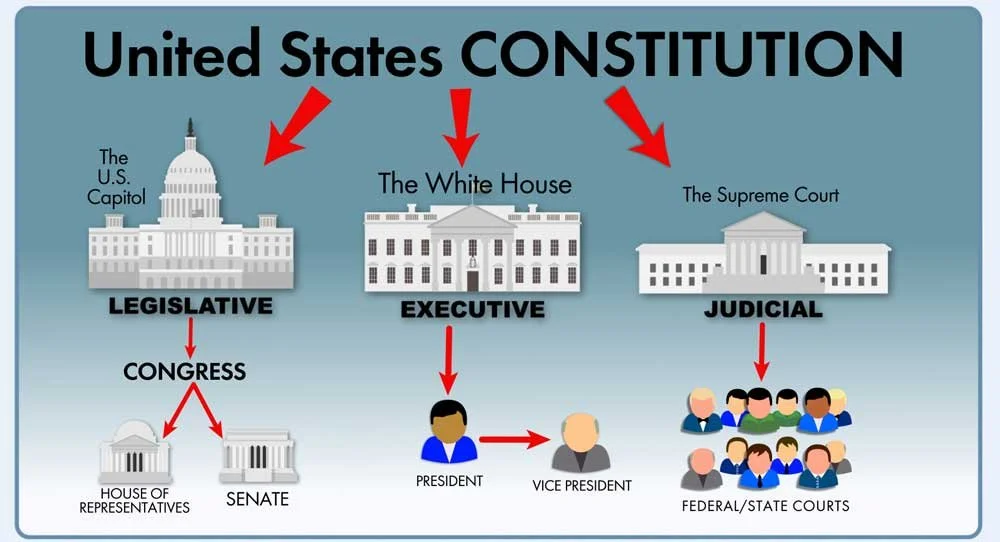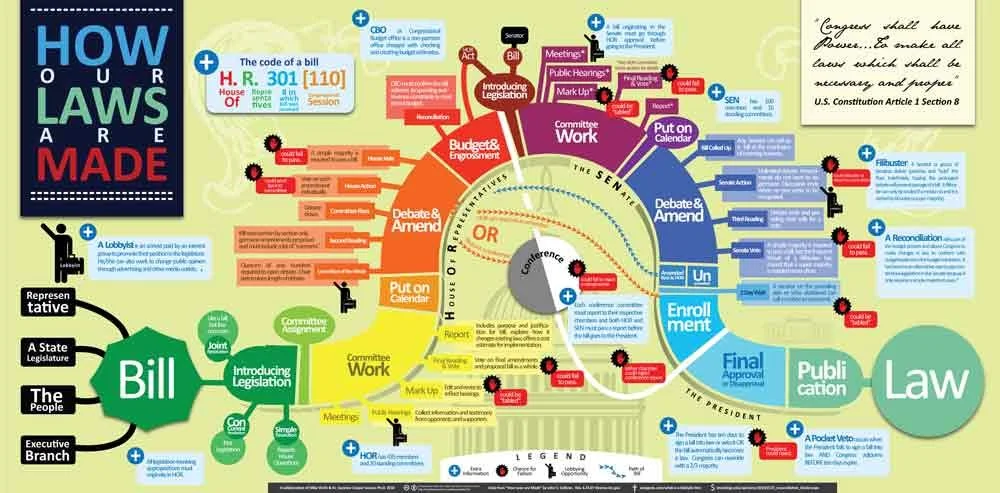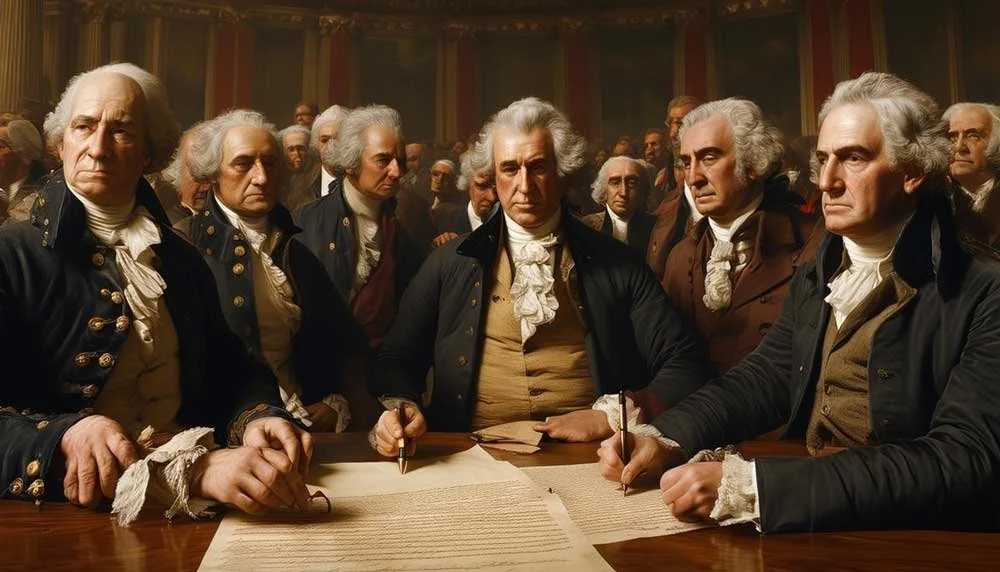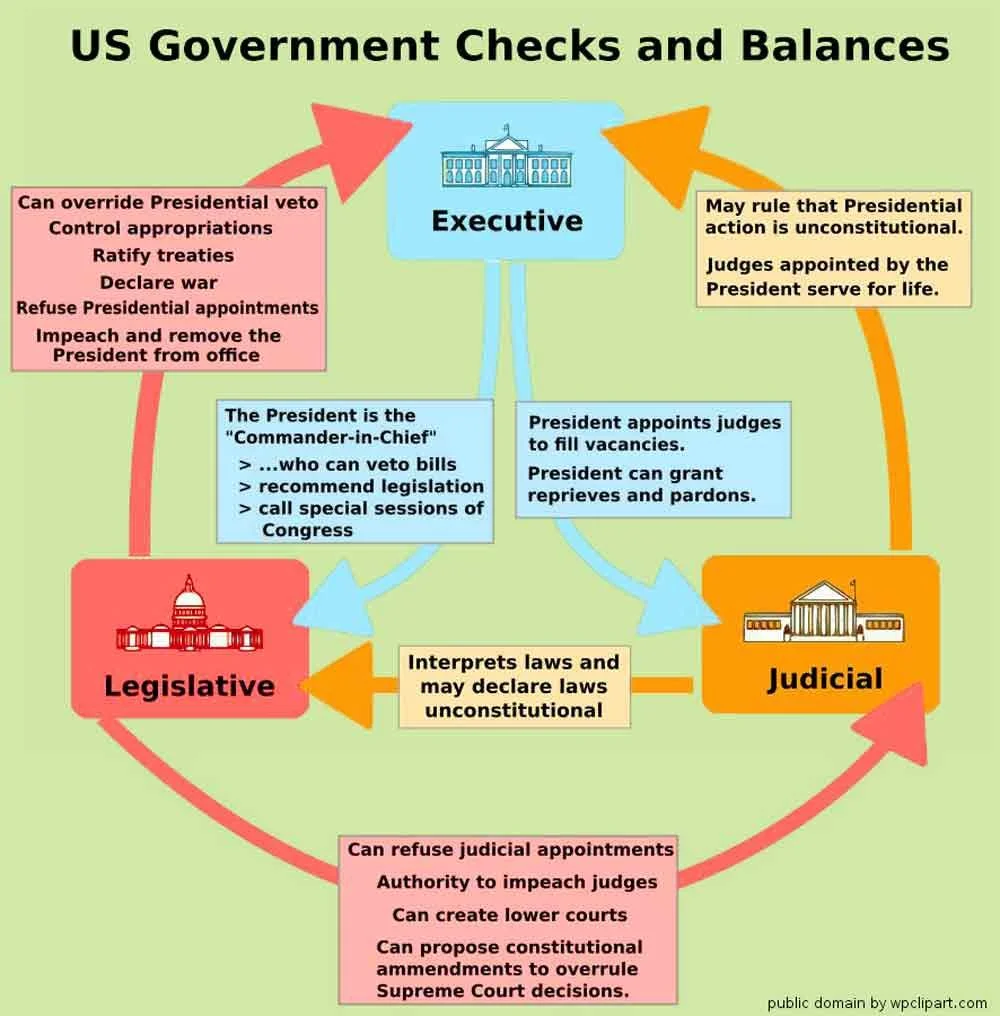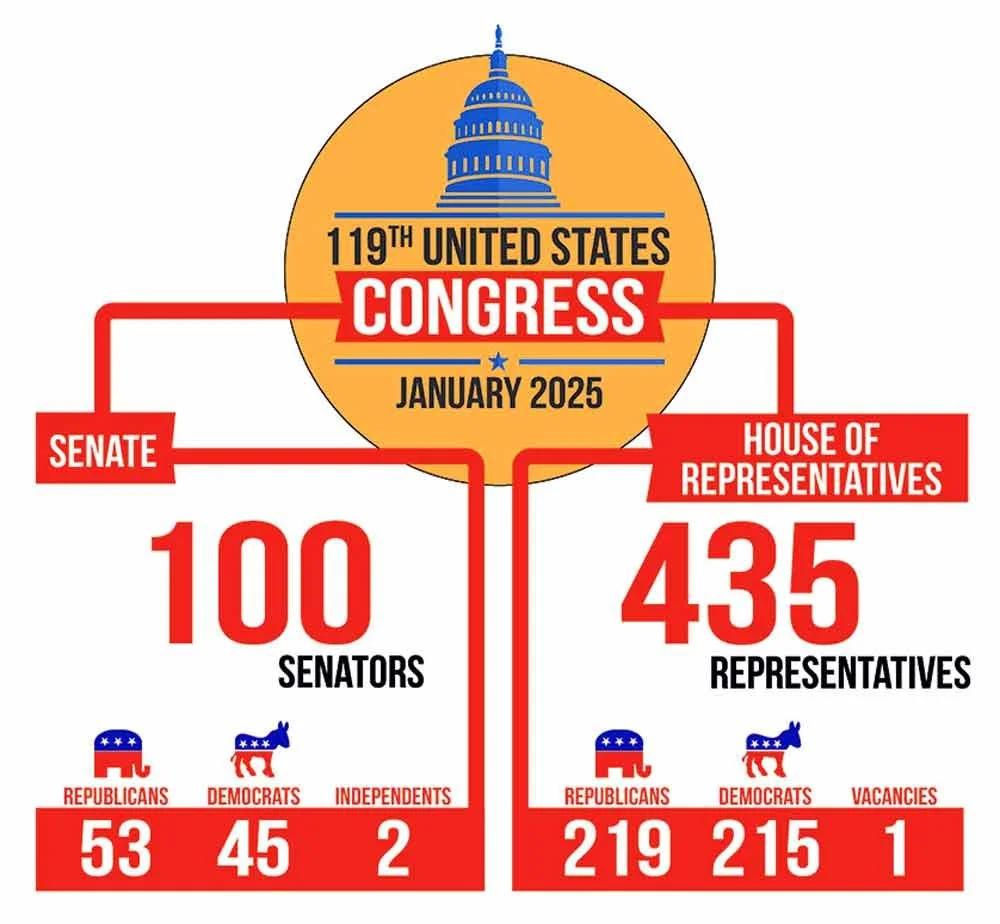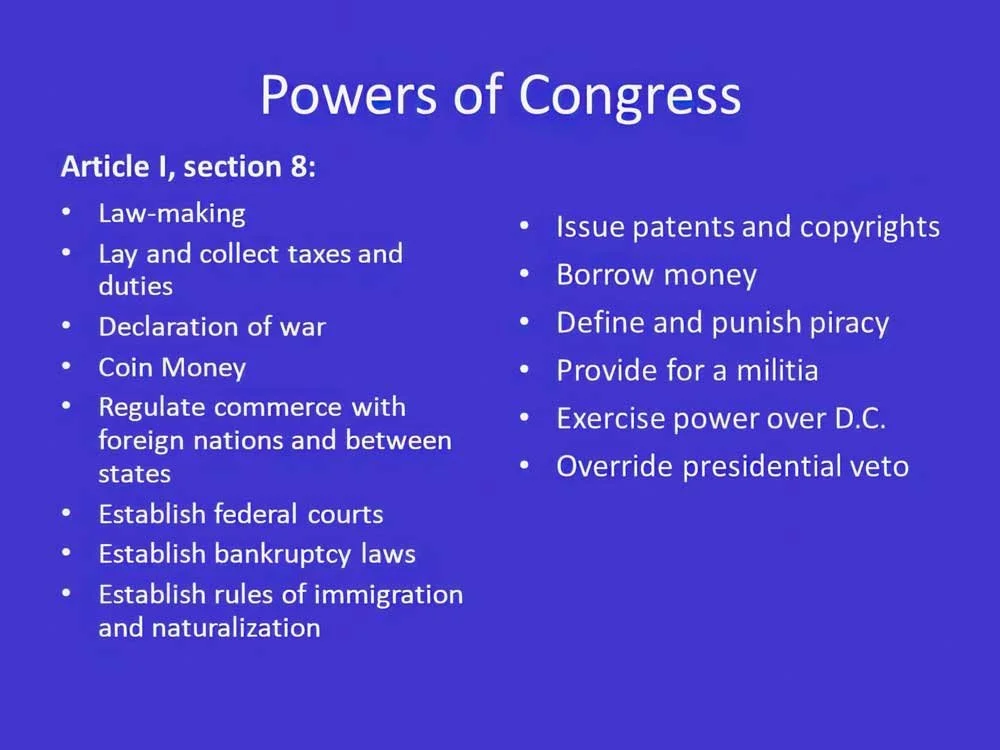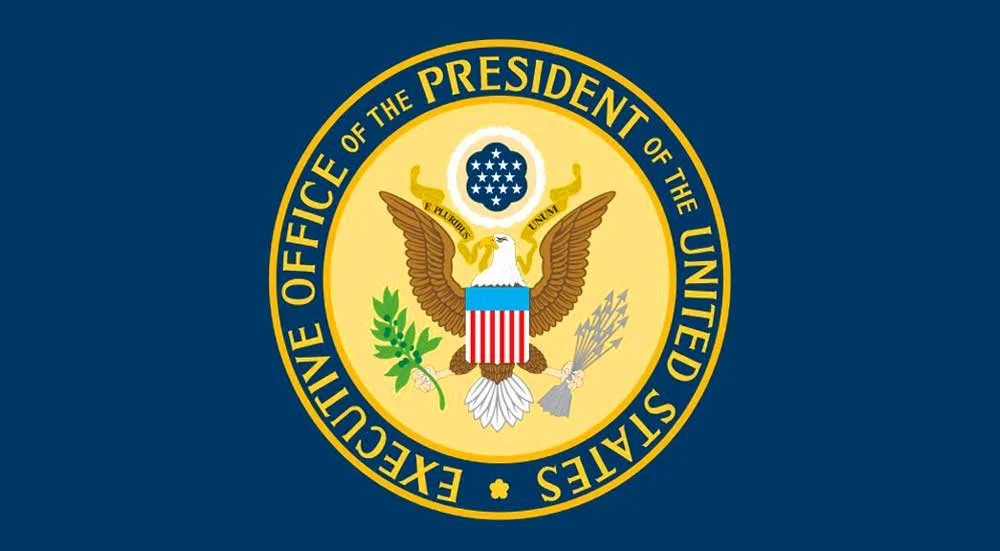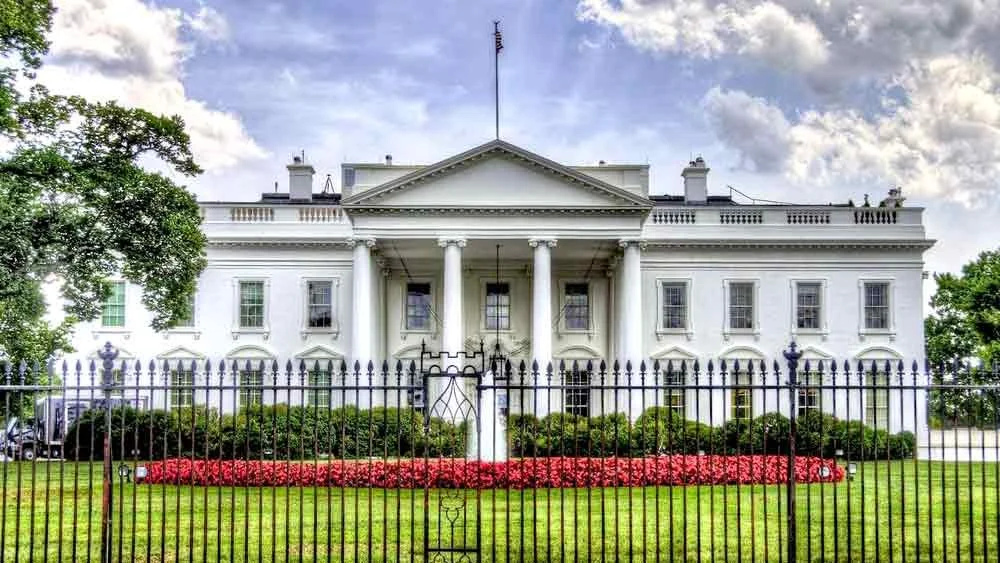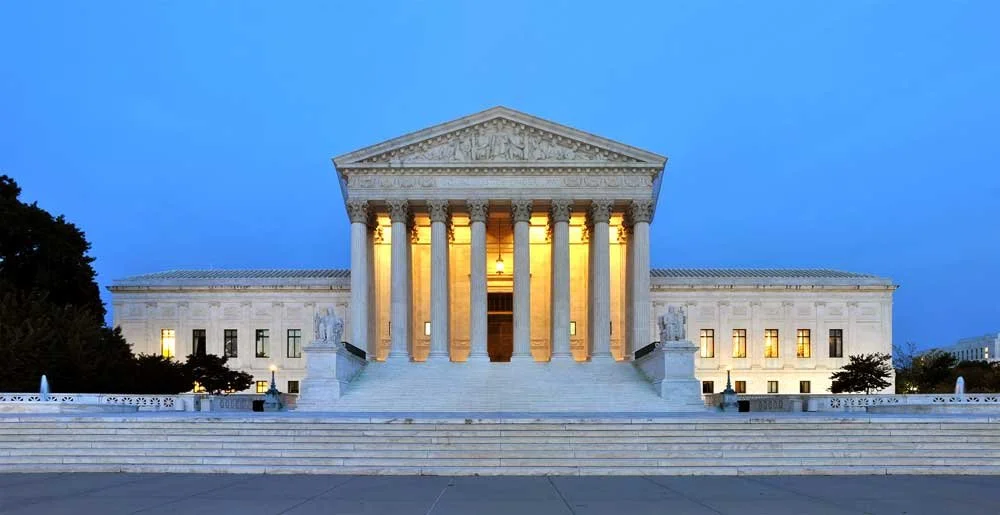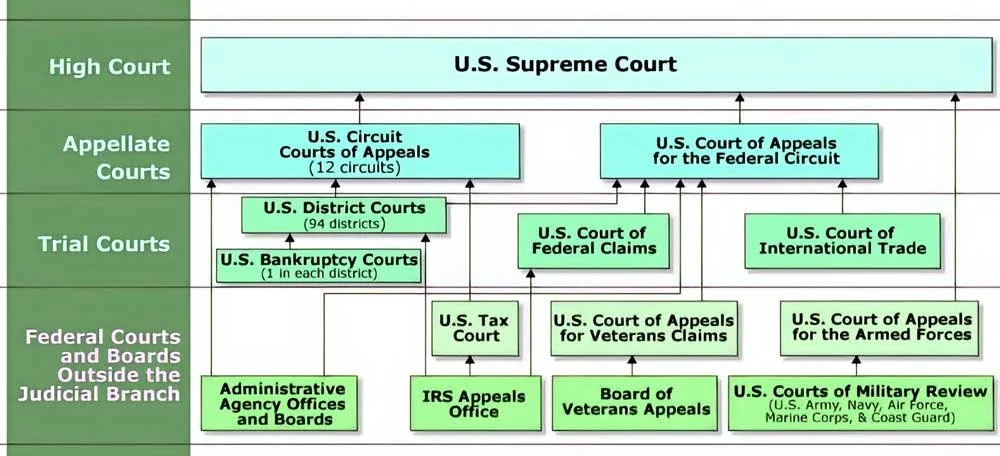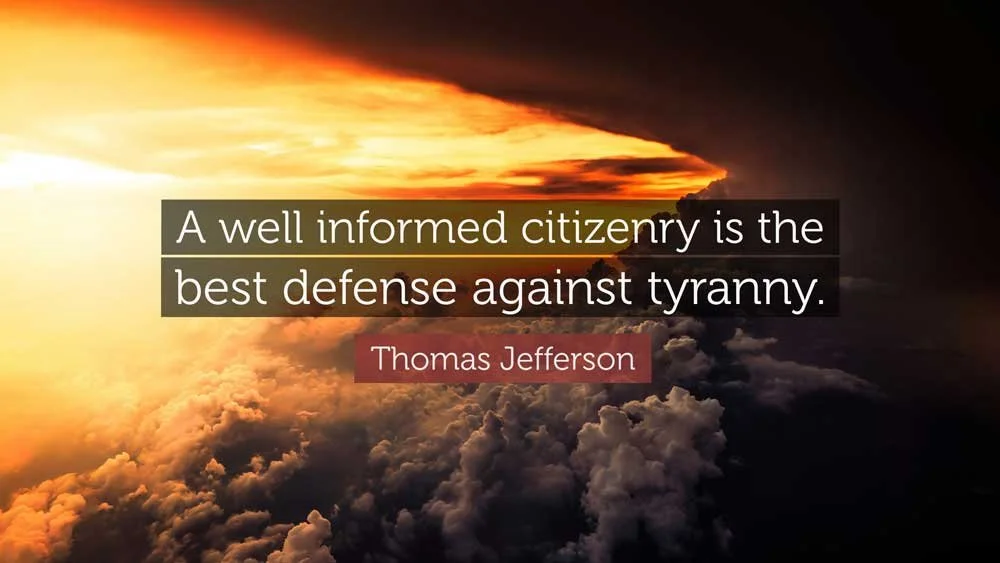How is power divided
in the United States government?
• Note: This video was made in 2013 — but the information is still good!
1. x
2. x
3. x
4. x
5. x
6. x
7. x
8. x
9. x
10. x
• Read •
The Three Branches of Government
The Power Puzzle
Have you ever wondered who has the authority to make laws or punish people who break them?
• Making law is a complicated business!
When we think of power in the United States, we usually think of the President—but he does not act alone.
In fact, he is only one piece of the power puzzle, and for very good reason.
When the American Revolution ended in 1783, the United States government was in a state of change.
• The American Revolution ended in 1783
The Founding Fathers knew that they did not want to create another country ruled by a king.
So, they focused on building a strong and fair national government that would protect individual freedoms and not abuse its power.
Structure of the Infant Government
When the new Constitution was adopted in 1787, the structure of the young government of the United States called for three separate branches, each with its own powers, and a system of checks and balances.
This would ensure that no one branch would ever become too powerful, because the other branches could always check or limit its power.
• Don’t worry about the details yet!
These branches work together to run the country and set rules for us all to live by.
Legislative Branch
The legislative branch is described in Article I of the U.S. Constitution.
Many people believe the Founding Fathers put this branch first because they thought it was the most important.
The legislative branch is made up of 100 U.S. Senators and 435 members in the U.S. House of Representatives.
Together, they are called the U.S. Congress. Making laws is the main job of the legislative branch, but it also approves federal judges and justices, passes the national budget, and can declare war.
Each state gets two Senators. The number of Representatives a state gets depends on how many people live in that state.
Executive Branch
The executive branch is described in Article II of the Constitution.
The leaders of this branch are the President and Vice President. They are responsible for enforcing the laws that Congress makes.
The President works closely with a group of advisors known as the Cabinet. These appointed helpers assist the President in making important decisions in areas like defense, the treasury, and homeland security.
• The White House where the POTUS (President of the United States) resides.
The executive branch also appoints government officials, commands the armed forces, and meets with leaders from other countries.
All that adds up to a lot of work for a lot of people. In fact, the executive branch employs over 4 million people to get everything done!
Judicial Branch
The third branch of the U.S. government is the judicial branch, described in Article III of the Constitution.
This branch includes all the courts in the country, from federal district courts to the U.S. Supreme Court.
• SCOTUS: Supreme Court of the United States
These courts interpret our nation's laws and punish those who break them.
The highest court—the Supreme Court—settles disputes among states, hears appeals from other courts, and decides if federal laws are constitutional.
There are nine justices on the Supreme Court. Unlike any other job in our government, Supreme Court justices are appointed for life—or for as long as they choose to serve.
INFORMED CITIZENRY
Our democracy depends on an informed citizenry.
That means it’s our responsibility to understand how our government works and what power each branch has over us.
Besides voting, you may one day be called to serve on a jury, testify in court, or ask your Congressperson to support or reject a law.
By knowing the branches of government, who runs them, and how they work together, you can be involved, informed, and intelligent.
x
► COMPREHENSION QUESTIONS
— please answer with complete sentences
1. x
2. x
3. x
4. x
5. x
6. x
7. x
8. x
9. x
10. x
► From EITHER/OR ► BOTH/AND
► FROM Right/Wrong ► Creative Combination
THESIS — Argue the case…
ANT-THESIS — Argue the case…
SYN-THESIS — Create a better solution…

